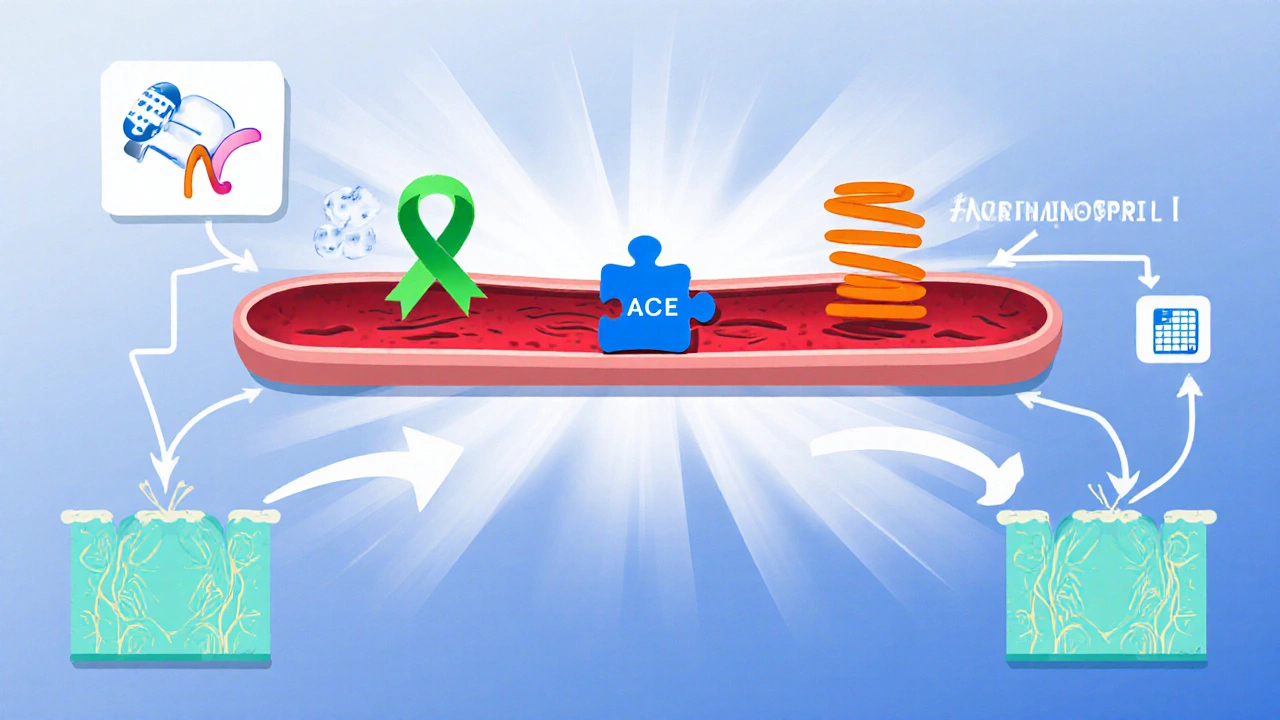When working with alternative hypertension drugs, medications or strategies used when standard blood‑pressure pills aren’t enough or cause intolerable side effects. Also known as second‑line antihypertensives, they give clinicians extra tools to reach target numbers. Calcium channel blockers, drugs that relax vascular smooth muscle by blocking calcium influx are one of the most common alternatives; they work well for isolated systolic hypertension and for patients who experience coughing with ACE inhibitors. ACE inhibitors, agents that block the conversion of angiotensin I to angiotensin II remain a staple, but when a cough or angio‑edema shows up, an ARB, angiotensin‑II receptor blocker that offers a similar blood‑pressure drop without the cough often steps in. Lifestyle modifications—dietary sodium reduction, regular aerobic activity, and weight control—are not drugs, yet they sit at the heart of any alternative regimen because they amplify medication effects and sometimes eliminate the need for extra pills. This mix of pharmacologic classes and non‑drug measures creates a flexible toolbox that clinicians can tailor to each patient’s age, kidney function, and comorbidities.
Alternative hypertension drugs encompass a range of mechanisms, from vasodilation (calcium channel blockers) to neurohormonal blockade (ACE inhibitors and ARBs). Choosing the right option often requires an assessment of side‑effect profiles, drug interactions, and patient preferences. For example, a diabetic patient may benefit from an ACE inhibitor because of its renal protective effect, while an older adult with isolated systolic hypertension might find a long‑acting calcium channel blocker more effective and better tolerated. Adding a thiazide‑type diuretic diuretic, low‑dose thiazide that reduces plasma volume and peripheral resistance can boost any of the above regimens, especially when target blood pressure remains above goal after monotherapy. On the non‑pharmacologic side, a sodium‑restricted DASH diet combined with 150 minutes of moderate‑intensity exercise per week can lower systolic pressure by 5‑10 mmHg, often allowing clinicians to step down drug doses and reduce pill burden. The synergy between medication choice, dosage titration, and lifestyle change means that patients usually experience a steadier drop in blood pressure and fewer adverse events.
Below you’ll find a curated collection of articles that dive deeper into each of these alternatives—clinical evidence, dosing tips, patient‑selection criteria, and emerging research. Whether you’re a patient looking for options beyond your first prescription or a health‑professional seeking a quick reference, the posts ahead cover the full spectrum of second‑line hypertension management.

A detailed comparison of Lisinopril with top blood pressure alternatives, covering mechanisms, side effects, dosing, costs, and when to choose each drug.